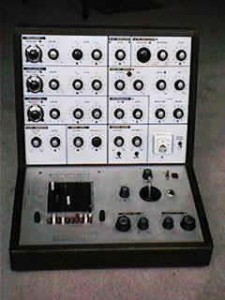TRT Counselling Session
Example of TRT ‘directive’ counselling
Here is an example of how patients are counselled during TRT.
Read this first:
In the audio file you will hear JWPH counselling an imaginary (but very typical) patient with tinnitus, some sensitivity to external sounds, and normal ears and hearing for their age. Most patients worry about the things that triggered tinnitus, a vast number of different events and situations. However the PERSISTENCE of tinnitus, what makes it go on, is essentially the same in every case and covered by this illustration.
Remember this is not full TRT, because everyone has a unique experience which must be addressed in a 1;1 situation after careful history taking. However most people can benefit from ‘generic’ information about the Jastreboff model and TRT.
Don’t forget the importance of 24 hour sound enrichment
Every TRT trained professional uses a different, and personal counselling technique, but many elements are shared by all of us. It is different from classical counselling, where there is a lot of listening. TRT directive counselling is a teaching or training session, where information and knowledge about tinnitus and sound sensitivity is given to the patient. This is a key part of TRT.
If you are being treated with TRT and without this teaching approach on an ongoing basis, then it is NOT TRT!
Download the audio file and the illustrations, which you should have in front of you as you listen. Do not use the illustrations on their own, until you have listened to the recording
Download audio file of directive counselling (English only)
Download illustrations for use with audio file (English only)
“Parables” used in TRT counselling
Simulations of tinnitus sounds
Because tinnitus can only be a personal experience, and the sounds are generated by the auditory system beyond the cochlea, we cannot directly record someone else’s tinnitus. Some sounds that upset people are actually body sounds (somatosounds) like the heart beat, blood flowing or muscles twitching. In most cases these sounds are normal, simply amplified by the brain in the same way that tinnitus is. Although these body sounds can sometimes be picked up by others (e.g. listening with a stethoscope in the neck region, where we all generate sounds of the heart beating) the mechanism of distress, when this is present, is the same as for tinnitus. Listening to this demonstration, you may be able to tell which ones are the body sounds and which ones are tinnitus! Although some of these tinnitus simulations are strange, even bizarre, the distress caused has nothing to do with the quality of the sound, or even its loudness. This depends on the way individuals react, and how strongly they react.
The technique used in this research was to ask patients to listen to their tinnitus in a quiet room. Sounds were then presented to patients from an EMS music synthesiser (see below), theoretically capable of producing any sound, or combination of sounds. When the sound from the simulator presented through a loud speaker, was the same (or almost the same) as the the patient’s own tinnitus, the simulated sound was recorded on tape. These are a few of the 200 cases so documented. The research was performed between 1975 and 1977 at the RNID medical research unit. It was first presented at the Ciba Foundation Symposium in 1981 and published in the Symposium Series no 85: Tinnitus; Hazell JWP, Measurement of tinnitus in humans pp 35-53. See this paper for further details.
Please respect the ownership of these recordings.



